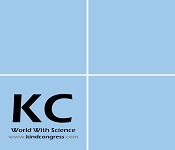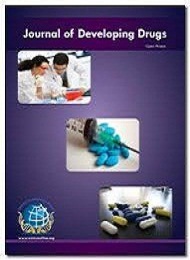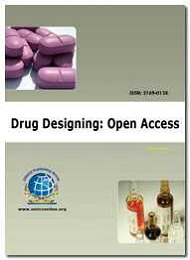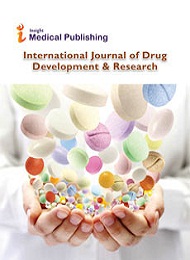Theme: Frontier Novelties in Drug Formulations & Drug Delivery
Drug Formulation Congress 2018
17th International Conference on Drug Formulation & Drug Delivery is scheduled to be held during November 08-09, 2018 at Auckland, New Zealand. This Drug Formulation Congress 2018 includes a wide range of Keynote presentations, plenary talks, Symposia, Workshops, Exhibitions, Poster presentations and Career development programs
Series Ltd Organizes Conference 3000+ Global Events Every Year across USA, Europe & Asia with support from 1000 more scientific societies and Publishes 700+ Open access journals which contains over 100000 eminent personalities, reputed scientists as editorial board and organizing committee members. The Conference Series LLC ltd website will provide you list and details about the conferences organize worldwide.
Why to Attend???
Drug Formulation Congress 2018 Conference is a multidisciplinary program with broad participation with members from around the globe focused on learning about formulations and drug delivery and its advances. This is your best opportunity to reach the largest assemblage of participants from Pharma research community that is from academia, drug delivery entities, medical groups, related associations, societies and also from government agencies, pharmaceutical, biomedical and medical device industries.
Drug Formulation Congress 2018 will discuss various disciplines involved in the drug formulation procedures and drug delivery technologies; it will educate health care researchers about design, operation, organizing, research computing, regulatory aspects and reporting of formulations. This conference conduct presentations, distribute information, meet with current and potential scientists, make a splash with new Pharma research developments, and receive name recognition at this 2-days event. World renowned speakers and the most recent techniques, developments, the newest updates in formulations and drug delivery are hallmarks of this conference.
Who should attend and Who You’ll Meet
Directors/Senior Directors/Executive Directors and Vice Presidents/Senior Vice Presidents/Executive Vice Presidents and Heads/Leaders/Partners of
-
CROs and CMOs
-
Pharma Research Sites
-
Pharma/Biotech and Medical Device industries
-
Hospitals, Associations
Medical Directors, Principal Investigators, Methodologists, and other Pharmaceutical research professionals along with Academicians: University Faculties like Directors, Senior Professors/Assistant Professors/ Associate Professor, Research Scholars, scientists who are related to pharmaceutical research.
Target Audience
- PhD Scholars
- Graduates and Post Graduates
- Professors, Associate Professors, Assistant Professors
- Bio instruments Professionals
- Bio-informatics Professionals
- Directors, CEO’s of Organizations
- Supply Chain companies
- Manufacturing Companies
- Software development companies
- Research Institutes and members
Track 1: Drug Design & Development
Drug design is the method of inventing innovative medications. Drug design defines the design of molecules that are corresponding in shape and charge to the bio molecular target with which they interact and therefore will bind to it. Generally, the drug is a tiny organic molecule which triggers or slows down the activity of a bio-molecule such as a protein which repeatedly results in a medicinal benefit to the patient. Discovery of drugs is challenging. Various medications are invented by chance observations, the scientific examination of other medicines or by finding out the side effects of some other drugs. A methodical technique is significant screening observations where important drug targets are tested with thousands of various compounds to observe, whether conversations occur. Basically, drug design involves design of small molecules that are harmonizing in shape and charge to the bio molecular target to which they act together and consequently will bind to it.
Related Pharma Societies | Pharma Associations
Society for Clinical Trials, Association of Clinical Research, The Society of Clinical Research Associates, Clinical Research Society, American Association of Pharmaceutical Scientists, Association of British Pharmaceutical Industry, Indian Society for Clinical Organization Research (ISCR), Pharmaceutical Information and Pharmacovigilance Association (PIPA), Pharmaceutical Society Of New Zealand (PSNZ), Pharmaceutical Association of Mauritius(PAM), International Society of Pharmacovigilance (ISOP), Drug Information Association, The Australian Society of Clinical and Experimental Pharmacologists and Toxicologists (ASCEPT), European Association for Clinical Pharmacology and Therapeutics (EACPT).
Track 2: Computer Aided Drug Design (CADD)
The processes of designing a new drug by using bioinformatics implements have opened a new area of drug research and development. Computational techniques assist us in searching drug target and in designing drug. Bioinformatics affects a new drug design in the following drug design path.
By using computational methods and the 3D structural information of the protein target, we are now able to scrutinize the detailed underlying molecular and atomic interactions involved in ligand: protein interactions and thus interpret experimental results in detail. The use of computers in drug discovery bears the additional advantage of delivering new drug candidates more rapidly and cost-efficiently. Computer-aided drug discovery has recently had important successes: new ligands have been predicted along with their receptor-bound structures and in several circumstances the achieved hit rates (ligands discovered per molecules tested) have been significantly greater than through experimental high-throughput screening. Strategies for CADD vary depending on the extent of structural and other information available regarding the target (enzyme/receptor) and the ligands.
Related Pharma Societies | Pharma Associations
Society for Clinical Trials, Association of Clinical Research, The Society of Clinical Research Associates, Clinical Research Society, American Association of Pharmaceutical Scientists, Association of British Pharmaceutical Industry, Indian Society for Clinical Organization Research (ISCR), Pharmaceutical Information and Pharmacovigilance Association (PIPA), Pharmaceutical Society Of New Zealand (PSNZ), Pharmaceutical Association of Mauritius(PAM), International Society of Pharmacovigilance (ISOP), Drug Information Association, The Australian Society of Clinical and Experimental Pharmacologists and Toxicologists (ASCEPT), European Association for Clinical Pharmacology and Therapeutics (EACPT)
Track 3: Biomarkers in Drug Design
Technological advancements in the molecular characterization of cancers have assisted researchers to identify an increasing number of key molecular drivers of cancer progression. These drug discoveries have led to multiple novel anticancer therapeutics, and clinical advantage in selected patient populations. Despite this, the identification of clinically relevant predictive biomarkers of response continues to lag behind. In this review, we discuss strategies for the molecular characterization of cancers and the importance of biomarkers for the development of novel antitumor therapeutics.
The discovery and evaluation of any novel biomarkers will ideally be specialized to Clinical Laboratory Improvement Amendments (CLIA) and Good Clinical Laboratory Practice (GCLP) standards, so as to ensure accuracy and reproducibility of laboratory procedures. Predictive biomarkers indicate the likelihood of response to a specific antitumor therapy. Such assays should be scientifically sound, Predictive biomarkers include both tumor-specific and surrogate biomarkers and are crucial to accelerating the drug development process.
Related Pharma Societies | Pharma Associations
Society for Clinical Trials, Association of Clinical Research, The Society of Clinical Research Associates, Clinical Research Society, American Association of Pharmaceutical Scientists, Association of British Pharmaceutical Industry, Indian Society for Clinical Organization Research (ISCR), Pharmaceutical Information and Pharmacovigilance Association (PIPA), Pharmaceutical Society Of New Zealand (PSNZ), Pharmaceutical Association of Mauritius(PAM), International Society of Pharmacovigilance (ISOP), Drug Information Association, The Australian Society of Clinical and Experimental Pharmacologists and Toxicologists (ASCEPT), European Association for Clinical Pharmacology and Therapeutics (EACPT)
Track 4: Pre-Formulation & Formulation Aspects
Drug Formulation is the study of relationships between pre-formulation, pharmaceutical formulation, delivery, disposition and clinical response. The inherent instability nature of a new drug will alter its preferred form into undesired form when presented in a suitable dosage form with the excipient/s upon storage. In early days this process was restricted only for assessing few characteristics, but today this process is being considered as a formulation strategy and hence tremendous technological advancement has been accomplished in this field which enables us to save time and money through planned management system and hence impacts Drug Formulation 2017 to be a formulation conference. Use of glorious statistical software even based on artificial neural networking are made the task of pre-formulation and optimization process easier. Role of pre formulation studies techniques like freeze drying aspects projects the event Drug Formulation 2017 to pose as a freeze drying meeting in drug discovery, drug development plays major role in pharmaceutical formulation development and the revisions will help in different dosage forms design. With the increasing number of novel and specialized compounds being developed, a "one size fits all" approach to drug formulation and delivery is no longer optimal, necessitating the consideration of formulations unique to each drug. NDDS conference will discuss on Premature Approaches, Present Scenario and Future Prospects of Pre-formulation events. There are more than 1400 sustained or controlled release drugs have been approved all over the world. Pharmaceutical conferences discuss the state-of-art technology being applied and involve advances in formulation studies.
Related Pharma Societies | Pharma Associations
Society for Clinical Trials, Association of Clinical Research, The Society of Clinical Research Associates, Clinical Research Society, American Association of Pharmaceutical Scientists, Association of British Pharmaceutical Industry, Indian Society for Clinical Organization Research (ISCR), Pharmaceutical Information and Pharmacovigilance Association (PIPA), Pharmaceutical Society Of New Zealand (PSNZ), Pharmaceutical Association of Mauritius(PAM), International Society of Pharmacovigilance (ISOP), Drug Information Association, The Australian Society of Clinical and Experimental Pharmacologists and Toxicologists (ASCEPT), European Association for Clinical Pharmacology and Therapeutics (EACPT)
Track 5: Pharmacokinetics & Pharmacodynamics
Pharmacokinetics is currently defined as the study of the time course of drug absorption, distribution, metabolism, and excretion. Clinical pharmacokinetics is the application of pharmacokinetic principles to the safe and effective therapeutic management of drugs in an individual patient. Primary goals of clinical pharmacokinetics include enhancing efficacy and decreasing toxicity of a patient’s drug therapy. The development of strong correlations between drug concentrations and their pharmacologic responses has enabled clinicians to apply pharmacokinetic principles to actual patient situations.
Pharmacodynamics refers to the relationship between drug concentration at the site of action and the resulting effect, including the time course and intensity of therapeutic and adverse effects. The effect of a drug present at the site of achievement is determined by that drug’s binding with a receptor. Receptors may be present on neurons in the central nervous system (i.e., opiate receptors) to depress pain sensation, on cardiac muscle to affect the intensity of contraction, or even within bacteria to disrupt maintenance of the bacterial cell wall
Related Pharma Societies | Pharma Associations
Society for Clinical Trials, Association of Clinical Research, The Society of Clinical Research Associates, Clinical Research Society, American Association of Pharmaceutical Scientists, Association of British Pharmaceutical Industry, Indian Society for Clinical Organization Research (ISCR), Pharmaceutical Information and Pharmacovigilance Association (PIPA), Pharmaceutical Society Of New Zealand (PSNZ), Pharmaceutical Association of Mauritius(PAM), International Society of Pharmacovigilance (ISOP), Drug Information Association, The Australian Society of Clinical and Experimental Pharmacologists and Toxicologists (ASCEPT), European Association for Clinical Pharmacology and Therapeutics (EACPT)
Track 6: Clinical Trails & Biotherapeutics
Clinical Biotherapeutic aspects including study drug design, drug-drug interactions, QT assessment, immunogenicity, comparability, special populations (hepatic and liver failure), PK and PD, regulatory expectations of PK and PD characterization, as well as reviewing factors which influence the ADME of Biotherapeutics. The objectives of early clinical development of therapeutic proteins are the same as for small molecules i.e. to investigate the molecule in a manner that will gain necessary knowledge about its tolerability safety pharmacokinetics (PK) and if possible pharmacodynamics (PD) effects in the most appropriate human populations while simultaneously protecting their safety. However, there are specific features of proteins that must be considered when designing clinical pharmacology studies.
Related Pharma Societies | Pharma Associations
Society for Clinical Trials, Association of Clinical Research, The Society of Clinical Research Associates, Clinical Research Society, American Association of Pharmaceutical Scientists, Association of British Pharmaceutical Industry, Indian Society for Clinical Organization Research (ISCR), Pharmaceutical Information and Pharmacovigilance Association (PIPA), Pharmaceutical Society Of New Zealand (PSNZ), Pharmaceutical Association of Mauritius(PAM), International Society of Pharmacovigilance (ISOP), Drug Information Association, The Australian Society of Clinical and Experimental Pharmacologists and Toxicologists (ASCEPT), European Association for Clinical Pharmacology and Therapeutics (EACPT)
Track 7: Innovative Drug Discovery and Nanotechnology
Size reduction is a fundamental unit operation having important applications in pharmacy. It helps in improving solubility and bioavailability, reducing toxicity, enhancing release and providing better drug formulation opportunities for drugs. In most of the cases, size reduction is limited to micron size range, for example, various pharmaceutical dosage forms like powder, emulsion, suspension etc. Drugs in the nano meter size range enhance performance in a variety of dosage forms. Major advantages of nanosizing include (i) increased surface area, (ii) enhanced solubility, (iii) increased rate of dissolution, (iv) increased oral bioavailability, (v) more rapid onset of therapeutic action, (vi) less amount of dose required, (vii) decreased fed/fasted variability, and (viii) decreased patient-to-patient variability.
Pharmaceutical nanotechnology has provided more fine-tuned diagnosis and focused treatment of disease at a molecular level. Pharmaceutical nanotechnology is most innovative and highly specialized field, which will revolutionize the pharmaceutical industry in near future. Pharmaceutical nanotechnology presents revolutionary opportunities to fight against many diseases. It helps in detecting the antigen associated with diseases such as cancer, diabetes mellitus, neurodegenerative diseases, as well as detecting the microorganisms and viruses associated with infections. It is expected that in next 10 years market will be flooded with nanotechnology devised medicine.
Related Pharma Societies | Pharma Associations
Society for Clinical Trials, Association of Clinical Research, The Society of Clinical Research Associates, Clinical Research Society, American Association of Pharmaceutical Scientists, Association of British Pharmaceutical Industry, Indian Society for Clinical Organization Research (ISCR), Pharmaceutical Information and Pharmacovigilance Association (PIPA), Pharmaceutical Society Of New Zealand (PSNZ), Pharmaceutical Association of Mauritius(PAM), International Society of Pharmacovigilance (ISOP), Drug Information Association, The Australian Society of Clinical and Experimental Pharmacologists and Toxicologists (ASCEPT), European Association for Clinical Pharmacology and Therapeutics (EACPT)
Track 8: Novel Drug Delivery System
Identifying drug targets plays essential roles in designing new drugs and combating diseases. Unfortunately, our current understanding about drug targets is far from comprehensive. Screening drug targets in the lab is an expensive and time-consuming procedure. In the past decade, the accumulation of various types of study of science related data makes it possible to develop computational approaches to predict drug targets. Non-communicable diseases such as cancer, atherosclerosis and diabetes are responsible for most important social and health affliction as millions of people are dying every year. Out of which, atherosclerosis is the leading cause of deaths worldwide. The lipid abnormality is one of the most important modifiable risk factors for atherosclerosis. Both genetic and environmental components are associated with the development of atherosclerotic plaques. Immune and inflammatory mediators have a complex role in the initiation and progression of atherosclerosis. Understanding of all these processes will help to invent a range of new biomarkers and novel treatment modalities targeting various cellular events in acute and chronic inflammation that are accountable for atherosclerosis. Several biochemical pathways, receptors and enzymes are involved in the development of atherosclerosis that would be possible targets for improving strategies for disease diagnosis and management.
Related Pharma Societies | Pharma Associations
Society for Clinical Trials, Association of Clinical Research, The Society of Clinical Research Associates, Clinical Research Society, American Association of Pharmaceutical Scientists, Association of British Pharmaceutical Industry, Indian Society for Clinical Organization Research (ISCR), Pharmaceutical Information and Pharmacovigilance Association (PIPA), Pharmaceutical Society Of New Zealand (PSNZ), Pharmaceutical Association of Mauritius(PAM), International Society of Pharmacovigilance (ISOP), Drug Information Association, The Australian Society of Clinical and Experimental Pharmacologists and Toxicologists (ASCEPT), European Association for Clinical Pharmacology and Therapeutics (EACPT).
Track 9: Medicinal Chemistry & Drug Discover Advancements
Medicinal Chemistry is a branch of chemistry which especially agreements with synthetic organic chemistry and pharmacology including various other biological specialties which is involved with design. It combines knowledge and capacities from the fields of cheminformatics, molecu, chemical creation and development of drug for marketing of pharmaceutical agents lar modeling and important bioinformatics and demands an in-depth appreciative of the physico-chemical properties of a three-dimensional molecule. The information base required by today's medicinal chemist has increased dramatically and has highlighted an rising challenge for chemists to understand the growing field of drug design.
Related Pharma Societies | Pharma Associations
Society for Clinical Trials, Association of Clinical Research, The Society of Clinical Research Associates, Clinical Research Society, American Association of Pharmaceutical Scientists, Association of British Pharmaceutical Industry, Indian Society for Clinical Organization Research (ISCR), Pharmaceutical Information and Pharmacovigilance Association (PIPA), Pharmaceutical Society Of New Zealand (PSNZ), Pharmaceutical Association of Mauritius(PAM), International Society of Pharmacovigilance (ISOP), Drug Information Association, The Australian Society of Clinical and Experimental Pharmacologists and Toxicologists (ASCEPT), European Association for Clinical Pharmacology and Therapeutics (EACPT)
Track 10: Drug Product Manufacturing
Drug manufacturing (Pharmaceutical Manufacturing) is the process of industrial-scale synthesis of pharmaceutical drugs by pharmaceutical companies. The process of drug manufacturing can be demolished down into a series of unit operations, such as milling, granulation, coating, tablet pressing, and others. The changing pharmaceutical landscape is a popular discussion point as of late. Armed with a fresh, non-blockbuster-reliant business model and treatment options that are expanding from small molecules to a range of new, more targeted therapies, the industry is at what PwC calls, “a critical juncture.”
Parenteral drug delivery is the second largest segment of this transformative pharmaceutical market covered only by the more mature oral solid dosage forms accounting for nearly 30 percent of total pharma market share. According to Survey, the market for parenteral drug delivery products is projected to rise over 10 percent annually to $86.5 billion in 2019.
Related Pharma Societies | Pharma Associations
Society for Clinical Trials, Association of Clinical Research, The Society of Clinical Research Associates, Clinical Research Society, American Association of Pharmaceutical Scientists, Association of British Pharmaceutical Industry, Indian Society for Clinical Organization Research (ISCR), Pharmaceutical Information and Pharmacovigilance Association (PIPA), Pharmaceutical Society Of New Zealand (PSNZ), Pharmaceutical Association of Mauritius(PAM), International Society of Pharmacovigilance (ISOP), Drug Information Association, The Australian Society of Clinical and Experimental Pharmacologists and Toxicologists (ASCEPT), European Association for Clinical Pharmacology and Therapeutics (EACPT)
Track 11: Chemical and Pharmaceutical Engineering
Pharmaceutical engineering is a branch of pharmaceutical science and technology that involves development and manufacturing of products, processes, and components in the pharmaceuticals industry (i.e. drugs & biologics). While developing pharmaceutical products involves many interrelated disciplines (e.g. medicinal chemists, analytical chemists, clinicians/pharmacologists, pharmacists, chemical engineers, biomedical engineers, etc.), the specific subfield of "pharmaceutical engineering" has only emerged recently as a divergent engineering discipline. This now brings the problem-solving principles and quantitative training of engineering to complement the other scientific fields already involved in drug development
Related Pharma Societies | Pharma Associations
Society for Clinical Trials, Association of Clinical Research, The Society of Clinical Research Associates, Clinical Research Society, American Association of Pharmaceutical Scientists, Association of British Pharmaceutical Industry, Indian Society for Clinical Organization Research (ISCR), Pharmaceutical Information and Pharmacovigilance Association (PIPA), Pharmaceutical Society Of New Zealand (PSNZ), Pharmaceutical Association of Mauritius(PAM), International Society of Pharmacovigilance (ISOP), Drug Information Association, The Australian Society of Clinical and Experimental Pharmacologists and Toxicologists (ASCEPT), European Association for Clinical Pharmacology and Therapeutics (EACPT).
Track 12: Pharmaceutical Regulatory Affairs
Regulatory Affairs contributes essentially to the overall success of drug development, both at early pre-marketing stages and at all times post-marketing. The pharmaceutical industry deals with an increasing number of interesting drug candidates, all of which necessitate the involvement of the Regulatory Affairs’ department. Regulatory Affairs professionals can play a key role in guiding drug development strategy in an increasingly global environment. But they also play an important operational role, for example, by considering the best processes to follow and enabling structured interaction with regulatory authorities. Regulatory Affairs is driven by good science and accordingly nothing remains static.
Related Pharma Societies | Pharma Associations
Society for Clinical Trials, Association of Clinical Research, The Society of Clinical Research Associates, Clinical Research Society, American Association of Pharmaceutical Scientists, Association of British Pharmaceutical Industry, Indian Society for Clinical Organization Research (ISCR), Pharmaceutical Information and Pharmacovigilance Association (PIPA), Pharmaceutical Society Of New Zealand (PSNZ), Pharmaceutical Association of Mauritius(PAM), International Society of Pharmacovigilance (ISOP), Drug Information Association, The Australian Society of Clinical and Experimental Pharmacologists and Toxicologists (ASCEPT), European Association for Clinical Pharmacology and Therapeutics (EACPT)
Track 13: Bioequivalence Studies and Assessment
Bioequivalence studies are done for both Early & late Clinical Trial formulations, Formulations used in clinical trials and stability studies, if different Clinical trial formulations and to-be-marketed drug product when it comes to cost and productivity metrics, it’s often said that what gets measured gets done. Bioequivalence is determined based on the bioavailability of the innovator medicine versus the generic medicine. The outline for bioequivalence study includes the organization of test and reference items on two events to volunteer subjects, with every organization isolated by a washout period. This Study involves parameters on (Cmax) and (AUC), Statistical evaluation.
Assessment of the bioequivalence of generic versions of certain reference drugs is complicated by the presence of endogenous levels of said compounds which cannot be distinguished from externally derived compound levels following drug administration. If unaccounted for, the presence of endogenous compound biases towards equivalence in bioequivalence studies of these drugs. Bioequivalence assessments may be complicated further as disposition of the exogenous analogue can be subject to various endogenous processes resulting in nonlinear pharmacokinetics. To overcome these inherent biases a number of different strategies have been employed.
Related Pharma Societies | Pharma Associations
Society for Clinical Trials, Association of Clinical Research, The Society of Clinical Research Associates, Clinical Research Society, American Association of Pharmaceutical Scientists, Association of British Pharmaceutical Industry, Indian Society for Clinical Organization Research (ISCR), Pharmaceutical Information and Pharmacovigilance Association (PIPA), Pharmaceutical Society Of New Zealand (PSNZ), Pharmaceutical Association of Mauritius(PAM), International Society of Pharmacovigilance (ISOP), Drug Information Association, The Australian Society of Clinical and Experimental Pharmacologists and Toxicologists (ASCEPT), European Association for Clinical Pharmacology and Therapeutics (EACPT)
Track 14: Recent advancements in BA/BE Research
The aim of bioavailability study is to find out the dosage form influence on the biological performance of the drug, sensitivity to detect differences in the rate and extent of absorption. Bioavailability and bioequivalence study design involves Single dose or multi dose standard 2x 2 crossovers, Parallel groups, for more than two formulations. Study design meant for estimating essential pharmacokinetic parameters differs significantly from a bioequivalence study meant for comparing the test formulation. The results of a pilot study can be used as the sole basis to document BA or BE provided the study’s design and execution are suitable and enough subjects have completed the study
Related Pharma Societies | Pharma Associations
Society for Clinical Trials, Association of Clinical Research, The Society of Clinical Research Associates, Clinical Research Society, American Association of Pharmaceutical Scientists, Association of British Pharmaceutical Industry, Indian Society for Clinical Organization Research (ISCR), Pharmaceutical Information and Pharmacovigilance Association (PIPA), Pharmaceutical Society Of New Zealand (PSNZ), Pharmaceutical Association of Mauritius(PAM), International Society of Pharmacovigilance (ISOP), Drug Information Association, The Australian Society of Clinical and Experimental Pharmacologists and Toxicologists (ASCEPT), European Association for Clinical Pharmacology and Therapeutics (EACPT)
Track 15: Business Oppurtunities in Drug Delivery
The global market for Business Development of Drug Delivery Technology in 2010 was $131.6 billion and is expected to rise at a compound annual growth rate (CAGR) of 5% and reach nearly $175.6 billion by 2016. The U.S constituted approximately 59% of the total drug delivery market in 2010 and was $78 billion. It is forecast to reach nearly $103 billion in 2016 at a CAGR of 4.7%. Europe contributed about 27% of the total drug delivery market in 2010 and was $36 billion and is expected to grow to $49 billion by 2016 at a CAGR of 5.6% in 2013, Drug Delivery Global market reached $150.3 billion, according to BCC research. This was an increase from $142 billion the previous year. Given its predicted annual growth the market represents a considerable business opportunity, which has been reflected in increasing number of drug delivery specialists. Consistent quality and competitive costs of product improves Production performance and continuity of supply and Product and technology auditing and due diligence with minimizing Regulatory Issues, quality control, and business development Business opportunities in drug delivery.
Related Pharma Societies | Pharma Associations
Society for Clinical Trials, Association of Clinical Research, The Society of Clinical Research Associates, Clinical Research Society, American Association of Pharmaceutical Scientists, Association of British Pharmaceutical Industry, Indian Society for Clinical Organization Research (ISCR), Pharmaceutical Information and Pharmacovigilance Association (PIPA), Pharmaceutical Society Of New Zealand (PSNZ), Pharmaceutical Association of Mauritius(PAM), International Society of Pharmacovigilance (ISOP), Drug Information Association, The Australian Society of Clinical and Experimental Pharmacologists and Toxicologists (ASCEPT), European Association for Clinical Pharmacology and Therapeutics (EACPT)
Track 16: NMR and Analysis of Small Organic Molecules
In bioscience and drugs, to small grade molecule may be a coffee mass (<900 Daltons [1]) compound which is incapable to facilitate regulate a process, with a size on the order of 10−9 m. Most drug analysis square measure identical little molecules. For analysis of small organic molecules the subsequent devices ought to be recycled are as follows HPLC method, Chromatography, Ultraviolet-visible (UV-VIS) spectrophotometry, Infrared (IR) spectrometry and Mass spectrometry.
Related Pharma Societies | Pharma Associations
Society for Clinical Trials, Association of Clinical Research, The Society of Clinical Research Associates, Clinical Research Society, American Association of Pharmaceutical Scientists, Association of British Pharmaceutical Industry, Indian Society for Clinical Organization Research (ISCR), Pharmaceutical Information and Pharmacovigilance Association (PIPA), Pharmaceutical Society Of New Zealand (PSNZ), Pharmaceutical Association of Mauritius(PAM), International Society of Pharmacovigilance (ISOP), Drug Information Association, The Australian Society of Clinical and Experimental Pharmacologists and Toxicologists (ASCEPT), European Association for Clinical Pharmacology and Therapeutics (EACPT)
Drug Formulation and Drug Delivery Conference will discuss effective formulation and delivery technologies for enhancing solubility and drug delivery. Drug Formulation Congress 2018 aims to aggregate leading experts from around the world who will discuss on formulation and delivery, and show how they are developing poorly soluble drugs into scientifically sound, patient-centric formulations, and reducing their product development timelines
Active Pharmaceutical Ingredient Market:
Transparency Market research states the opportunity in this market will be worth US$219.60 bn by 2023 from US$134.7 bn in 2015. Between the forecast period of 2015 and 2023, the overall market is expected to expand at a CAGR of 6.3%. Between the forecast period of 2015 and 2023, the overall market is expected to expand at a CAGR of 6.3%.
The global pharmaceutical excipients market is projected to reach USD 8.1 Billion in 2021 at a CAGR of 6.1% in the forecast period 2016 to 2021. The rising demand for new drug delivery systems, greater understanding of the functional benefits of excipients, growing pharmaceutical industry, and patent expiries of several blockbuster drugs are positively impacting the overall growth of the market.
Major Pharmaceutical Companies in New Zealand
- Abbott Laboratories NZ Ltd
- Allergan Pharmaceuticals Pty. Ltd
- Baxter Healthcare Ltd.
- Boehringer Ingelheim Ltd.
- CSL Biotherapies (NZ) Ltd
- Douglas Pharmaceuticals
- GlaxoSmithKline
- Janssen-Cilag Pty Ltd.
- Merck Ltd
- Neuren Pharmaceuticals Limited
- Novartis New Zealand Ltd
- Novo Nordisk Pharmaceuticals Ltd
- ORGANON New Zealand
- Pharmaco NZ Ltd
- PSM Healthcare Ltd
- Roche Products NZ Ltd.
- Roche Products NZ Ltd
Major Associations around the Globe:
- Pharmaceutical Research and Manufacturers of America
- Regulatory Affairs Professionals Society
- International Society of Pharmaceutical Compounding (ISPhC)
- International Young Pharmacists' Group (YPG)
- Parenteral Drug Association (PDA)
- Regulatory Affairs Professionals Society (RAPS)
- Controlled Release Society
- Society for biomaterials
- Washington State Pharmacy Association
- Inhalation Drug Delivery Association
- International society of drug delivery sciences and technology.
- American Association of Pharmaceutical Scientist
Top Pharma Universities in New Zealand:
- University of Otago
- University of Auckland
- New Zealand Management Academies (NZMA)
- Manukau Institute of Technology
- New Education Group (part of ACG Education)
- Academy New Zealand
Conference Highlights
- Drug Design And Development
- Computer Aided Drug Design ( CADD )
- Biomarkers in Drug Design
- Pre-Formulation & Formulation Aspects
- Pharmacokinetics and Pharmacodynamics
- Clinical Trails & Biotherapeutics
- Innovative Drug Discovery and Nanotechnology
- Novel Drug Delivery System
- Medicinal Chemistry and Drug Discover Advancements
- Drug Product Manufacturing
- Chemical and Pharmaceutical Engineering
- Pharmaceutical Regulatory Affairs
- Bioequivalence Studies and Assessment
- Recent advancements in BA/BE Research
- Business Opportunities in Drug Delivery
- NMR and Analysis of Small Organic Molecules
To share your views and research, please click here to register for the Conference.
To Collaborate Scientific Professionals around the World
| Conference Date | November 08-09, 2018 | ||
| Sponsors & Exhibitors |
|
||
| Speaker Opportunity Closed | |||
| Poster Opportunity Closed | Click Here to View | ||
Useful Links
Special Issues
All accepted abstracts will be published in respective Our International Journals.
- Drug Designing: Open Access
- Journal of Developing Drugs
- International Journal of Drug Development and Research
Abstracts will be provided with Digital Object Identifier by











